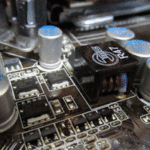2022-03-31 アメリカ・オークリッジ国立研究所(ORNL)
・Energy & Environmental Science誌によると、このハイブリッド・アプローチは、木材や草などのセルロース系バイオマスを、エタノールなどの低分子中間生成物に変換するために微生物を使用する。このエタノールは、その後、触媒作用によって、より重い自動車に適した炭化水素燃料にアップグレードされます。
・この研究では、生物学的手法と触媒的手法を組み合わせることで、「生物学が最も容易に作ることができる燃料分子と、世界がバイオマスから最も価値を認めて生産する燃料分子との間の現在のギャップを埋める有望なアプローチである」と述べられている。
<関連情報>
- https://www.ornl.gov/news/new-perspective-highlights-promise-hybrid-approach-cellulosic-biofuel-production
- https://pubs.rsc.org/en/content/articlelanding/2022/ee/d1ee02540f
セルロース系バイオマスの低コスト生物学的およびハイブリッド生物学的・触媒的燃料化へ向けて Toward low-cost biological and hybrid biological/catalytic conversion of cellulosic biomass to fuels
Lee R. Lynd, Gregg T. Beckham,Adam M. Guss, Lahiru N. Jayakody, Eric M. Karp, Costas Maranas, Robert L. McCormick,Daniel Amador-Noguez,Yannick J. Bomble,Brian H. Davison,Charles Foster,Michael E. Himmel,Evert K. Holwerda,Mark S. Laser,Chiam Yu Ng,Daniel G. Olson,Yuriy Román-Leshkov,Cong T. Trinh,Gerald A. Tuskan, Vikas Upadhayay,Derek R. Vardon,Lin Wang and Charles E. Wyman
Energy & Environmental Science First published:09 Feb 2022
DOI https://doi.org/10.1039/D1EE02540F
Abstract
Developing economically viable, scalable, and sustainable technologies for the conversion of lignocellulosic polysaccharides to liquid fuels is widely seen as a centerpiece of the global bioeconomy, and a key part of a multi-pronged approach to achieve carbon neutrality. Here we identify technology challenges and opportunities to achieve this promise. An overview of feedstocks, processes and products indicates that (1) biorefining at a scale sufficient to meaningfully impact climate change will likely involve fuels as the primary products, chemicals and biomaterials as co-products, and lignocellulose as the preferred feedstock; (2) microbial processing of cellulosic biomass will likely occur in the presence of solids, rather than involving solids-free sugar syrups, giving rise to challenges and constraints distinctive to lignocellulose; (3) anaerobic processing involves much lower costs than aerobic processing, making it more promising for fuel production; and (4) anaerobic production at high yields and broth titers has to date been reported only for molecules with ≤4 carbons. Some anaerobic bacteria are substantially more effective at polysaccharide deconstruction than aerobic fungi. Processes based on these microbes have great potential for cost reduction but require substantial research-driven advances. A mechanistic, functional group approach to product tolerance and inhibition is presented, separation technologies applicable to different product classes are surveyed, and perspectives are offered on opportunities to decrease product inhibition and the cost of product recovery. Pathways and research opportunities are considered for chemo-catalytic conversion of anaerobic fermentation products to larger fuel molecules. Fuel properties are considered for a broad range of biologically-derived products in relation to their suitability for various transport applications. Strategic perspectives are presented drawing on these diverse topics and insights. For multiple compounding reasons, features of small molecules make it less expensive to produce them biologically compared to large molecules, and this is particularly true for production from lignocellulose. Yet the fuels the world would most value producing from lignocellulosic biomass to address climate stabilization are large molecules compatible with heavy-duty, difficult-to-electrify transport applications. Hybrid processes wherein lignocellulose is converted biologically to small molecule intermediates and then converted chemo-catalytically to larger fuel molecules are a promising approach to reconciling this discrepancy.




